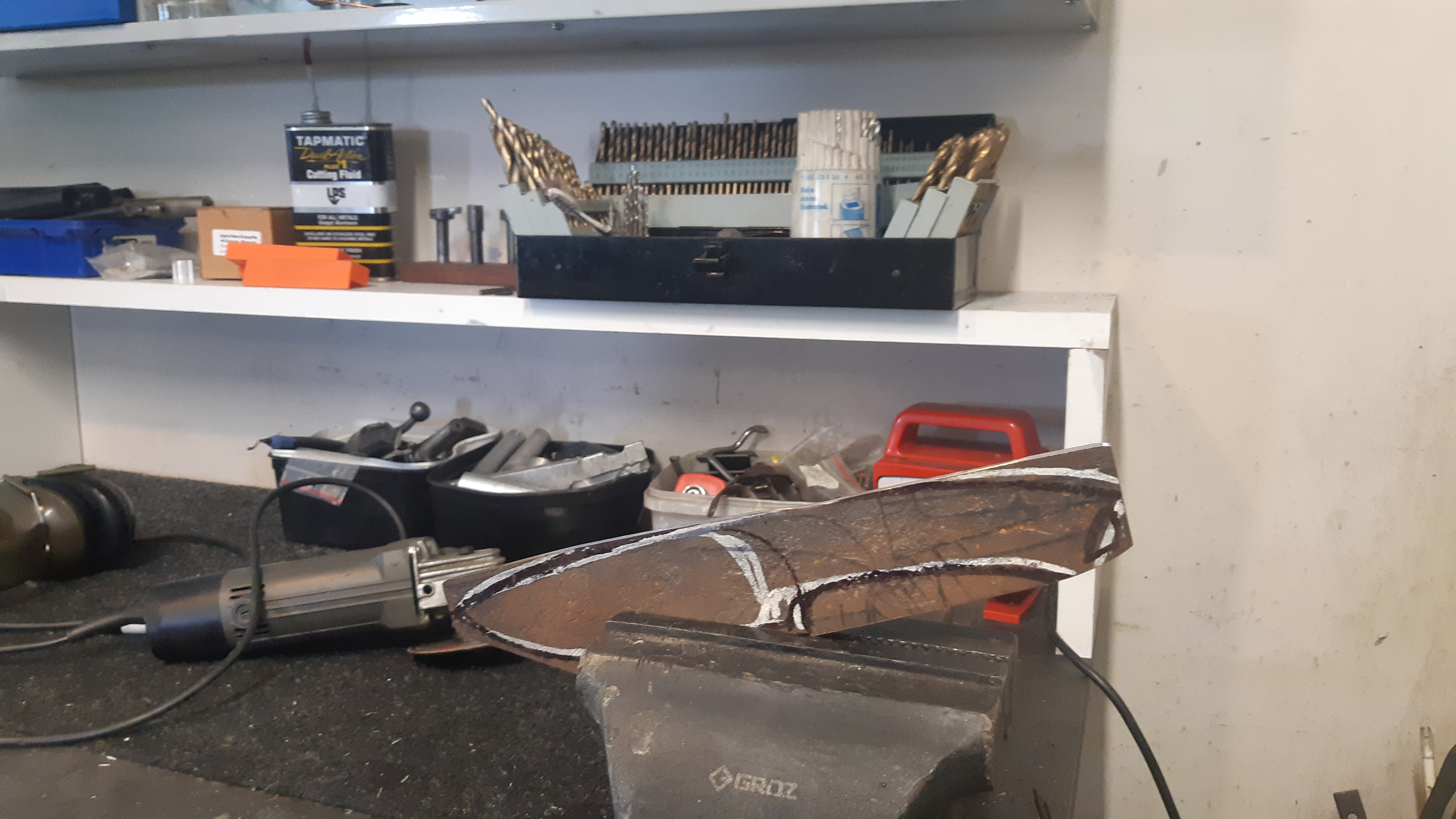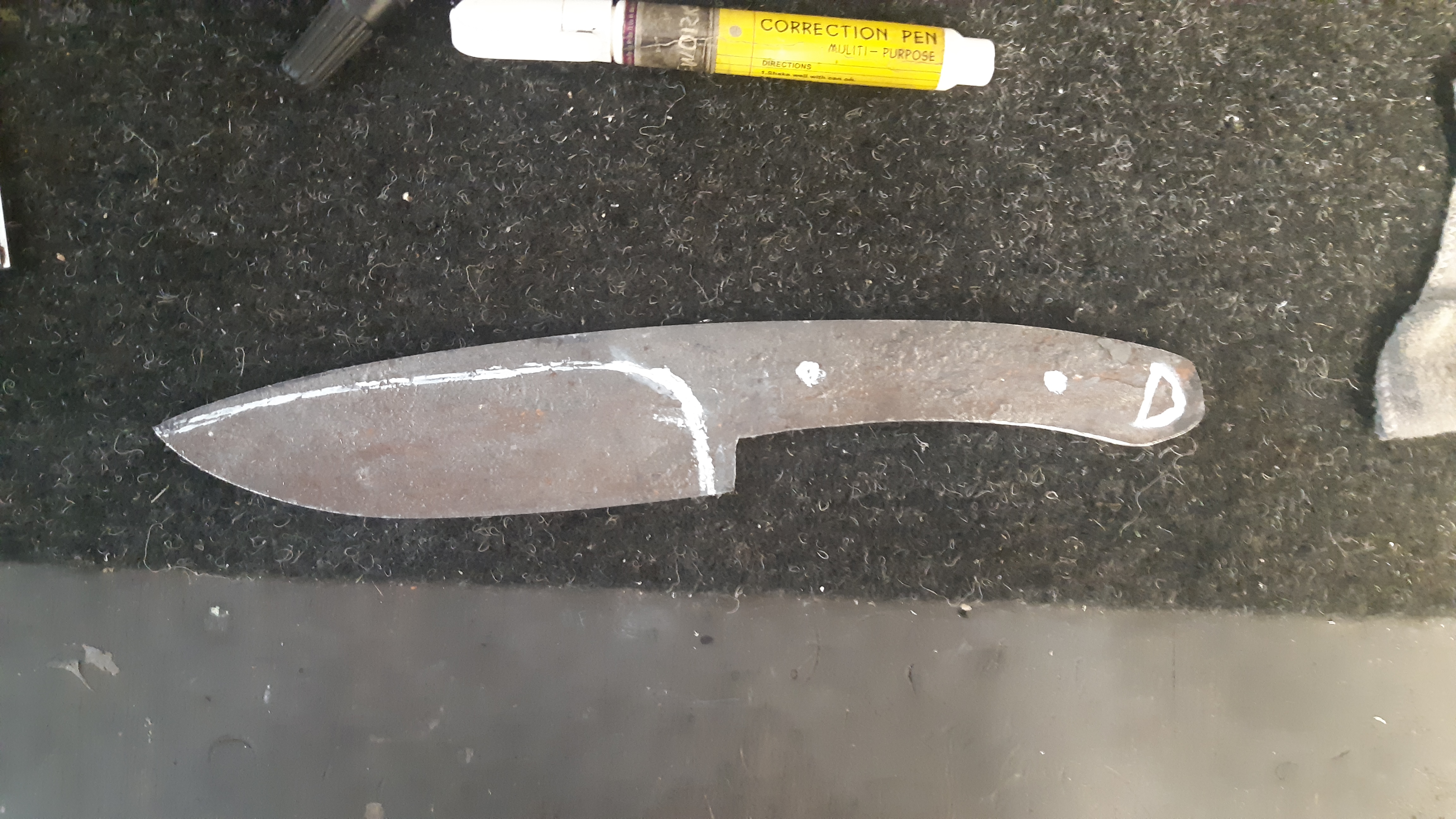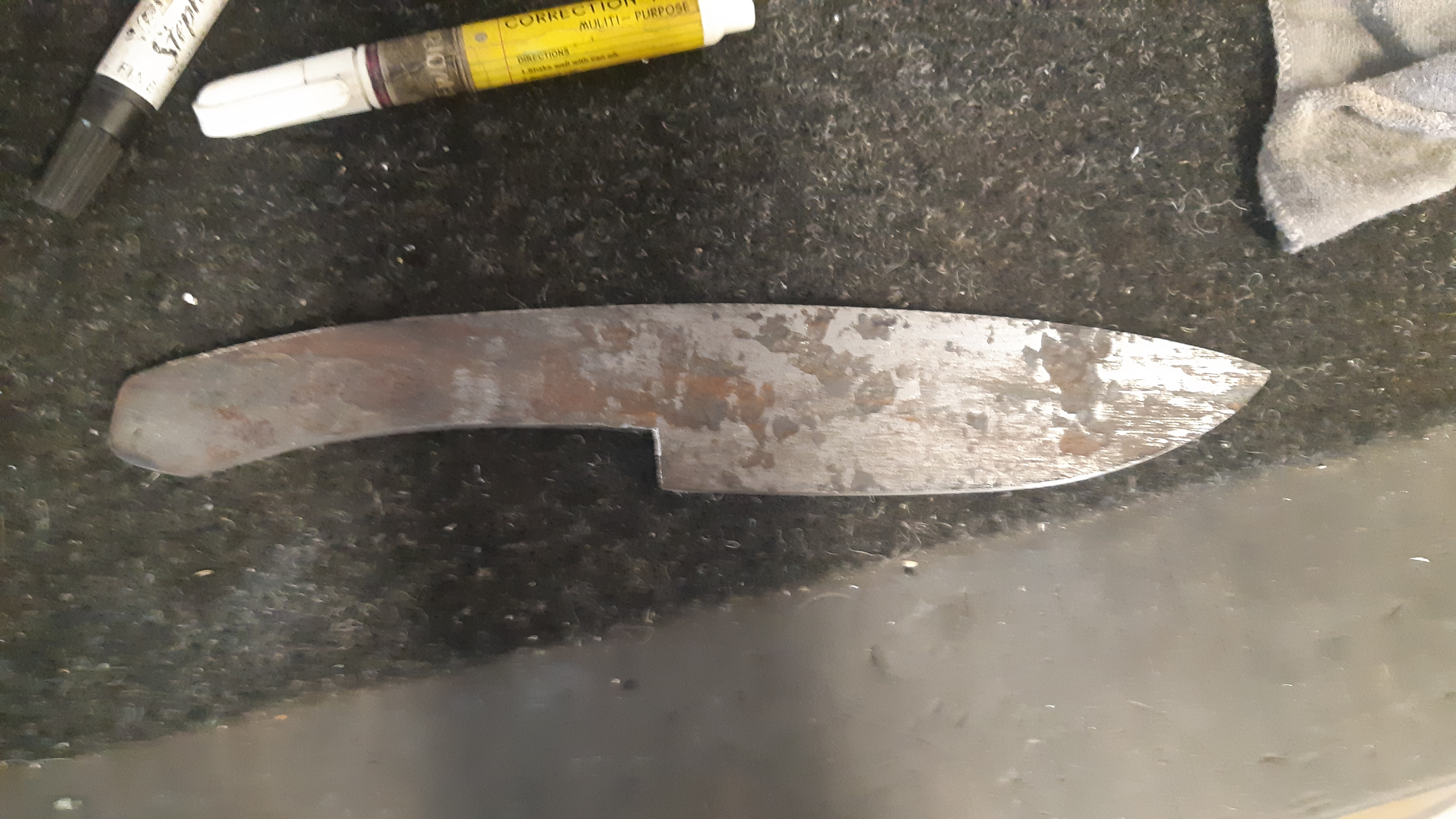I had a crack at a skinning knife a couple of weeks back just to fill in a quiet week.
I used to make knives when I was a kid, raiding my uncles workshop for random off cuts of stainless steel etc. They were never overly pretty but kept a 10 year old busy and more importantly developing my hand tool skills.
So with the jnr years of self taught skills and the later years of engineering experience I thought it was time to have another go.
I have always been a fan of Japanese knife making styles and love a good bit of damascus and hammer finished rustic metals.
A couple of years ago I mentioned to a ex black smith friend @Mikey-p my intention and my favored styles and he said wait there, I have just the thing for you.. he goes to his car and returns with a rusted heavy pitted piece of steel he had forged and hands it to me.. ummm like who would have that just hanging out in the boot of their car???!!!
Like most projects that piece of metal sat on my shelf in the workshop for 2 years before I finally got on to it.
It had sat there so long Id forgotten what the mix of metals were so I had to confirm that before starting.
It is a Japanese San Mai style which is a softer often non hardenable steal forged around a high carbon steal inner.
In this case he had forged a piece of 100+ year old wrought iron ships anchor chain around a piece of 2mm high carbon 1084. The laminates over all thickness is about 5mm.
There was a gap in my knife collection for a decent fixed blade skinnier so that is what I intended to make.
Roughly drawn up I took to it with a 2mm cut of disk to rough out the shape before hitting the belt sander.

Welcome guest, is this your first visit? Create Account now to join.
Welcome to the NZ Hunting and Shooting Forums.
Search Forums
User Tag List
Results 1 to 15 of 15
Threaded View
-
29-11-2020, 08:29 AM #1
San mai style skinning knife build
Last edited by Wingman; 29-11-2020 at 08:41 AM.
Similar Threads
-
Anyone used a Puukko style knife for boning our meat?
By hotbarrels in forum HuntingReplies: 25Last Post: 10-09-2017, 06:40 PM
Tags for this Thread
Welcome to NZ Hunting and Shooting Forums! We see you're new here, or arn't logged in. Create an account, and Login for full access including our FREE BUY and SELL section Register NOW!!




 63Likes
63Likes LinkBack URL
LinkBack URL About LinkBacks
About LinkBacks








 Reply With Quote
Reply With Quote


Bookmarks